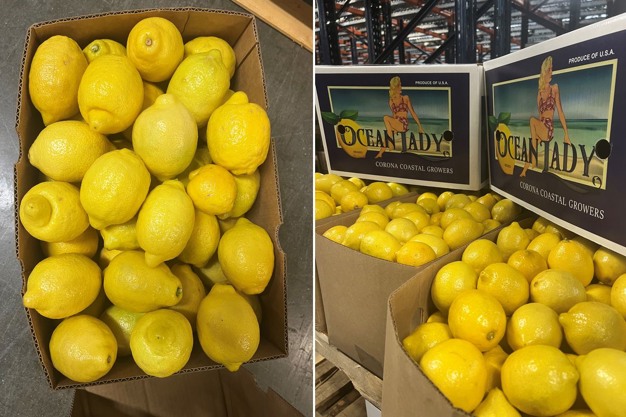The offshore lemon season is nearing its end, with Argentina wrapping up shipments and only a few arrivals left. Chile's lemon imports will continue until early October, while Mexico's production has declined due to challenging growing conditions. "This presents a favorable window for California's desert region," says Jose Fu with Corona College Heights (CCH). Although California's lemon season has started, the harvest is progressing slowly due to small fruit sizes. "Many growers are waiting for the fruit to size up before increasing their harvest," Fu noted.
Weather has been a key factor in the slow fruit sizing. The desert experienced intense heat, and while temperatures are beginning to cool, the fluctuations haven't yet encouraged consistent fruit growth. "As temperatures stabilize at lower levels, the fruit will size up," Fu explained. Additional factors affecting sizing include the fruit set and rainfall during the growing season.
Supply chain impact
The slow start is impacting the supply chain. While the delay may help absorb import volumes, some marketers have strict schedules for when they source desert lemons, moving to the Central Valley once the desert season ends. "At CCH, we are open to taking on more fruit when it's ready to be harvested," Fu shared.
Fu also indicated that sizing issues may not extend to other California growing regions. "I'm not yet aware of the crop sizing in the Central Valley," he said, noting that weather will continue to play a role. The rainy season, starting between now and October and lasting into March or April, could lead to size increases about 30 days after significant rain. Although there are rumors of a drier winter ahead, Fu cautioned that it's too early to tell.

Strong export prospects
With the southern hemisphere's citrus season ending, California is well-positioned for exports. "This export window opens as soon as there's sufficient supply and high-quality fruit from the desert," Fu stated. Markets such as Japan, South Korea, Australia, and Southeast Asia will be key destinations, especially as Chilean imports wind down.
Demand for large fruit is strengthening, while small fruit is seeing price pressure. "Once offshore lemons are absorbed by the market, pricing should stabilize," Fu concluded.
 Contact Information:
Contact Information:
Jose Fu
CCH Citrus
[email protected]
www.cchcitrus.com










